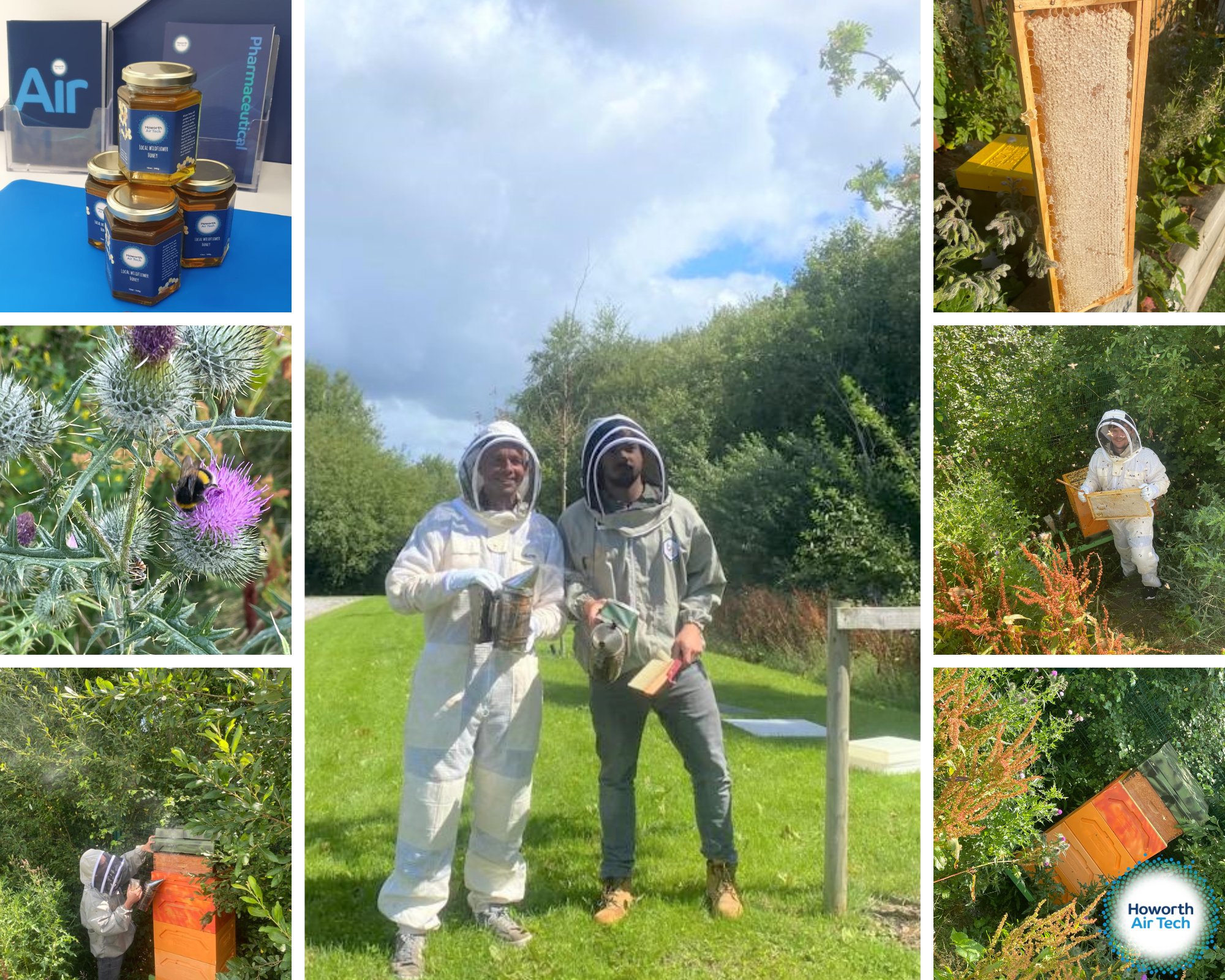News
Howorth Hives June Update
Posted:
Since the last update on the bees, there have been several significant developments. At Howorth, we conducted our first-ever spring harvest and obtained 100 pounds of honey. This honey was produced from the blooming local spring flowers, including hawthorn, dandelion, and fruit blossoms. The harvested honey has been packaged in jars and labelled. Our honey is always well received by clients visiting our Raven Locks site.
On June 1st, an interesting event took place at Ravenlocks: one of the hives swarmed. Swarming is a natural process in which a colony splits into multiple colonies as a means of reproduction. A swarm typically comprises the original queen and a large number of worker bees who leave their original hive in search of a new location. Upon inspection, it was revealed that the hive that swarmed was the angry hive. We bid good riddance to those bees, as they won't be missed.
We took advantage of the situation and decided to introduce a new queen. On June 19th, our beekeeper Scott Gee and helper Ryan Ince braved the angry hive, armed with our trusty smoker to keep the bees calm. We introduced a fresh queen in a queen cage to ensure her safety for a few days until the bees become accustomed to her new pheromones. As she gets released and begins laying eggs, we hope for a change in temperament over the next few months as the old bees die off and new ones emerge. It took about 40 stings to accomplish this task.
The original Howorth hive is still thriving, and since it hasn't swarmed and has displayed good temperament, we decided to propagate some eggs from this hive and transform them into new queens. This process involves delicately grafting tiny larvae from the colony and introducing them into a queenless hive.
The queenless bees perceive these larvae as their only hope for creating a new queen and proceed to feed them royal jelly, a special substance produced by the bees. This royal jelly triggers a genetic switch in the larvae, causing them to develop into queen bees instead of worker bees. After 16 days, the new queens emerge, carrying genetic traits inherited from the mother queen.
We will transport these queens to a different mating area (not Farnworth, as the local males there are excessively aggressive). In the mating area, the queens will embark on their first promiscuous flight and hopefully successfully mate with up to 20 male bees. Once mated, the queen will begin laying new eggs.
The resulting eggs will possess 50% of her genetics and the remaining 50% will be a combination of the males she mated with. The new queens will be introduced into new colonies in August.
